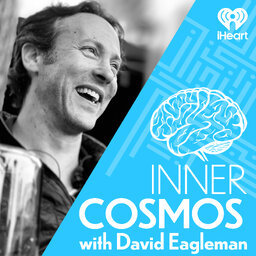Ep85 "What is a Thought?"
Brains bear thoughts like a peach tree bears peaches. Even for meditators it's almost impossible to stop the firehose of words and images and ideas. But what in the world is a thought, physically? How can you hear a voice in your head when there's no one speaking in the outside world? And what does any of this have to do with a small marine animal who eats its own brain? Join Eagleman for this week's deep dive into our inner life.
 Inner Cosmos with David Eagleman
Inner Cosmos with David Eagleman


